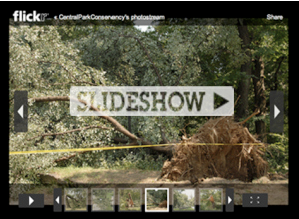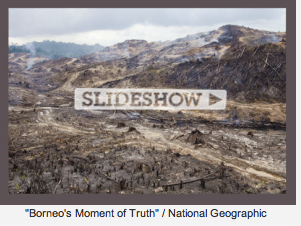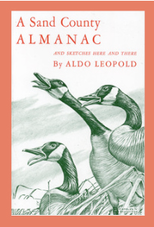Central Park, after all, was never the forest primeval. Still, there is something sacred about old trees – even if their age is measured in decades rather than centuries, and their arrangement determined by a landscape architect. They grew up with us, or we with them. In a place of constant change they are, simply, constant. If trees can be so easily uprooted, what chance have we? It is unnerving to see how shallow and vulnerable a tall tree’s roots really are.
Always, there are the trees. Budding, shady, raining seeds, etched with a white filigree sparkle.
According to the Central Park Conservancy, the tab for clean up and replanting will easily run into the hundreds of thousands of dollars (donations welcome). The true cost – lost views, lost homes (nests & burrows) and lost familiarity — is incalculable.
THE TREES WE KNOW & THE TREES WE ONLY KNOW OF
We will do whatever it takes to save the trees we know and love. But in the time it took the storm to turn the Park into a leafy war zone, several thousand trees were intentionally shredded in rain forests around the world.
- In Brazil, nearly 3 million acres destroyed by illegal logging, soy farming, cattle ranching, road-building and mining between 2007 and 2008, according to Greenpeace. Although the rate of destruction appears to be slowing, it is a tenuous triumph at best.
- In Congo, plans are in the works to turn a staggering one million hectares (2.47 million acres) into a palm oil plantation, which environmentalists term nothing short of a “biodiversity disaster.”
- In Borneo and Sumatra, the destruction of rain forest, mostly for palm oil plantations, has not only been devastating to wildlife (most famously, orangutans), but has made the land more vulnerable to fire.
WHAT WOULD ALDO DO? / FINDING “LEGACY” IN RECYCLING
If your path has not crossed Aldo Leopold’s yet, the time has come. Leopold is best known as the author a “A Sand County Almanac an Sketches Here and There,” in which he argues for a “land ethic” that acknowledges and values what Nature provides. Along with Rachel Carson’s “Silent Spring,” Leopold’s book, published in 1949, shortly after his death, helped lay the philosophical foundations for ecology.
The “Sand County” in title refers to a piece of worn out Dust Bowl-era farmland he bought an hour’s drive north of Madison, Wisconsin, where he was a professor of forestry at the university. With in the help of his wife, five children and a nearly endless supply of pine seedlings (Leopold also founded one of the country’s first arboretums at UW), he set about testing his ideas for healing and restoring land. Year after year, the Family Leopold planted thousands of trees. Many were lost to drought, but they kept trying.
Today, hiking through the 200+ acres of what is now The Aldo Leopold Foundation, giant pines tower overhead. Ironically, too many trees survived, weakening the forest in the competition for limited resources. In 2003, a selective harvest was organized to help the forest become more resilient to drought, disease and insects.
Logs were dried, stripped, cut into lumber and used to build a LEED Platinum “Legacy Center,” for educational programs, retreats and small conferences (the building was awarded 61 out of a possible 69 points, for those who keep score).
TREES FOR TREES
Unfortunately, Central Park trees cannot be turned to into lumber for fear of spreading insect pests (Asian long-horned beetles & emerald ash borers). Even cords of firewood are out the question. The only option: chipping logs for in situ mulch.
But there is still a way to create a legacy of hope a la the Leopold Foundation.
If Major League Baseball can license and sell ballpark grass seed and turf, surely Central Park can sell branded tree seedlings at a premium. Now take the legacy global: For every dollar that goes to Central Park, ring up two dollars for rain forest projects. Call it “Trees for Trees.” The Central Park Zoo could mount a biodiversity exhibit, connecting the dots between animals on display and the dire straits their wild kin face from habitat loss. Perhaps a “Tree Story” show at the Museum of Natural History. Or a website with virtual seedlings that can be “watered” and tended to, just like Neopets. Buy a cyber-seedling and be part of a Facebook Forest or Twitter Trees…
No doubt there are many other, better ideas out there, but you get the drift. Sometimes two wrongs actually can make a right. Actually a lot of rights: Mend the Park. Repair the rain forest. Help the planet. And while we’re at it: Clean the watershed. Stabilize hillside erosion. Scrub the air. Reduce farm fertilizer run-off. Provide wildlife habitat. Give migrating birds a home to go home to…
So, consider this a call to arms for green-minded marketers: How can we actually make this happen?
YOU HAD ME AT “ORANGUTAN”
There is, of course, no shortage of worthy reforestation projects around the world in desperate need of support. But as long as I have the floor, I nominate Willie Smits’ work in Borneo to start. The projects are comprehensive and practical, a deft mix of tech, cutting edge biology, social entrepreneurship and environmental stewardship
| |
Imagine that.












